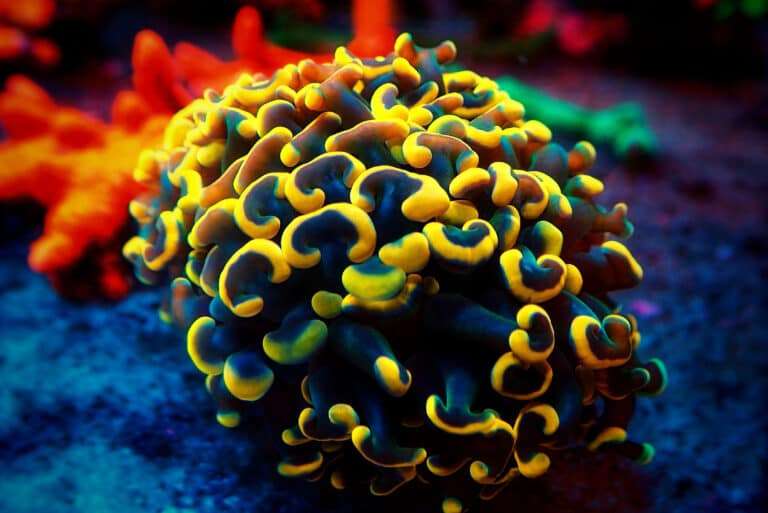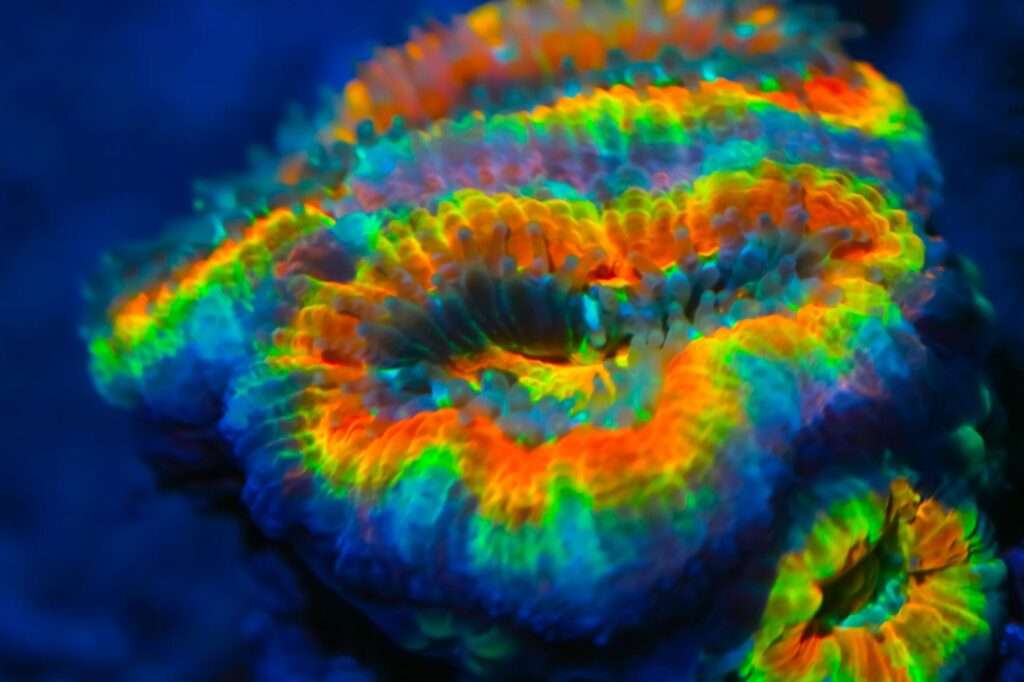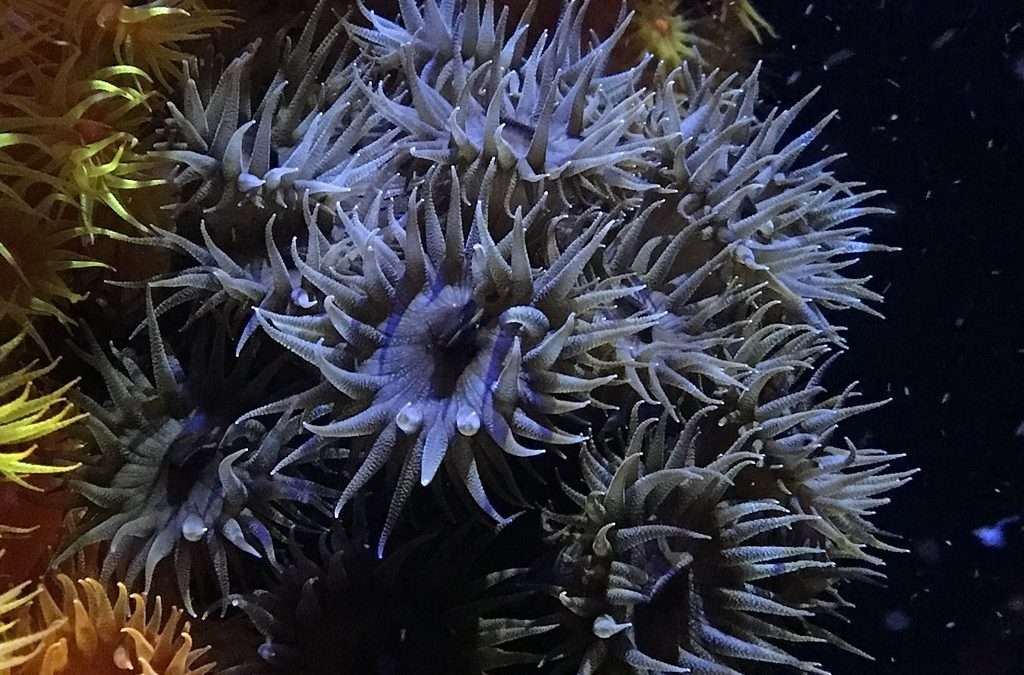
Reef keepers love the Large Polyp Stoney (LPS) coral Euphyllia ancora, sometimes known as the Anchor Coral. It is colorful and incredibly beautiful, with long tentacles and bean-shaped tips that gently sway in the stream. It resembles Euphyllia fimbriata, a near relative of the Hammer coral but one that is uncommon in Australia. Occasionally, the Anchor Coral is misidentified as the Hammer Coral or even the Frogspawn Coral, but you can tell the difference if you look closely.
Habitat
In 1980, Vernon and Pichon wrote a description of the euphyllia ancora. E. ancora occupy both the reef slopes and the reef bottoms, living in colonies in muddy but calm waters. They like bright, indirect light and can be found at depths of up to 131 feet (40 m). Stinging cells enable them to defend themselves from predators and to help them catch small prey.
Morphology
The meandering wall-like structure of the Anchor Coral E. ancora is topped with polyps that form “valleys” all over the surface. Massive colonies of polyps that partially (but not completely) regress into the skeleton are what they grow. The skeleton is concealed while the polyps are extended during the day and only partially at night when the tentacles retract. The tips of the Anchor Coral’s tentacles are shaped like a sausage or “C.” The Hammer Coral, E. fimbriata, which it resembles, has a point that is straighter and flatter. It has the same size and shape as the Frogspawn Coral E. divisa, however the E. divisa has a different skeleton structure that is denser. The length of each tentacle can increase by two to three times when the animal is feeding. Some colonies can grow to be over 3 feet tall (1 m). Unknown life expectancy.
In Captivity

- Feeding
Euphyllia corals have evolved a number of feeding techniques. Many of its nutrients are obtained through a symbiotic interaction with a sea algae called zooxanthellae. They can also take in dissolved organic substances and planktonic creatures as well as food particles from the water column. Surprisingly, these corals can also consume significantly bigger portions of food. Feed the coral the whole organism by chopping or dicing up whole fish or shrimp. Because different animal parts have varied nutritional characteristics, feeding your Euphyllia in this manner will provide positive effects. Since these corals are constantly hungry, feeding them as needed with a variety of meals is beneficial.
- Social Interactions and Compatibility
Euphyllia corals should be placed far from any other corals since they might be aggressive if they come in contact with them. The tentacles of E. ancora can mix with those of E. divisa (frogspawn) without causing any tissue harm. Aquariums with substantial collections of soft corals, especially some Sinularia species, tend to be problematic for E. ancora. Their sweeper tentacles, which may grow to exceed 10″ (25 cm) in length when hungry, are a hazard to adjacent corals due to their potent sting. Regular feedings will help to solve this issue.
Table





